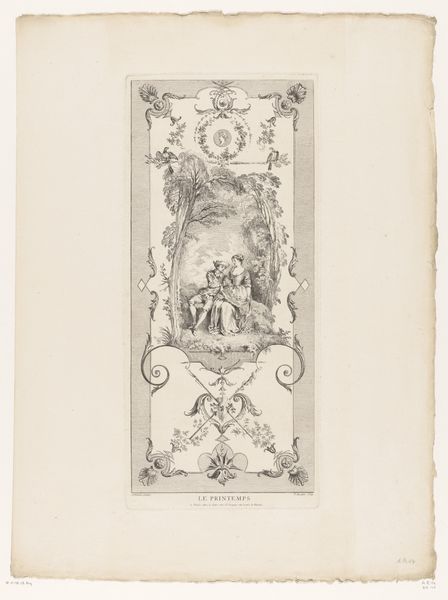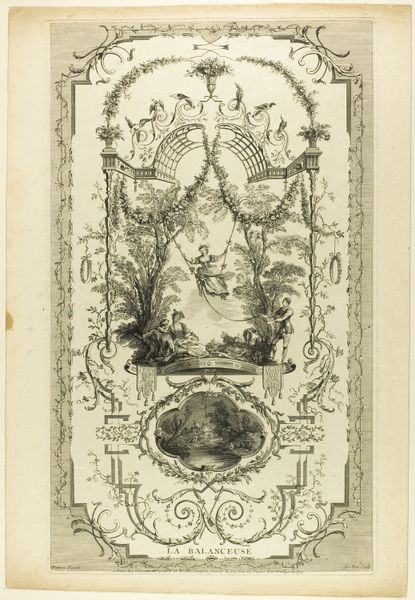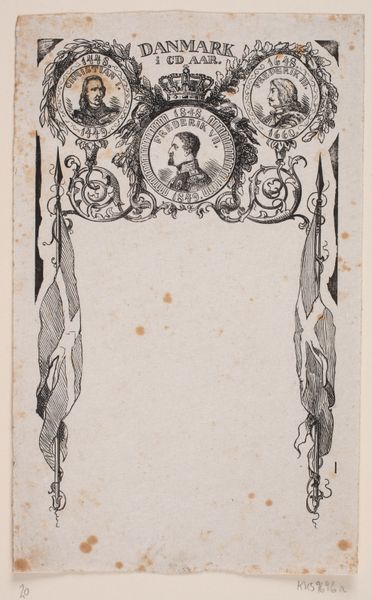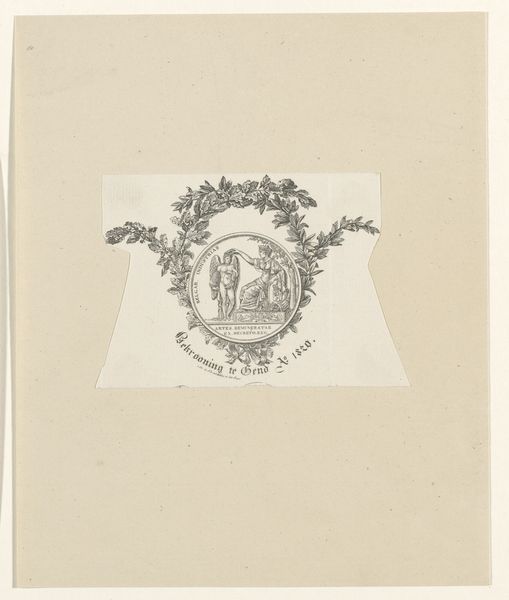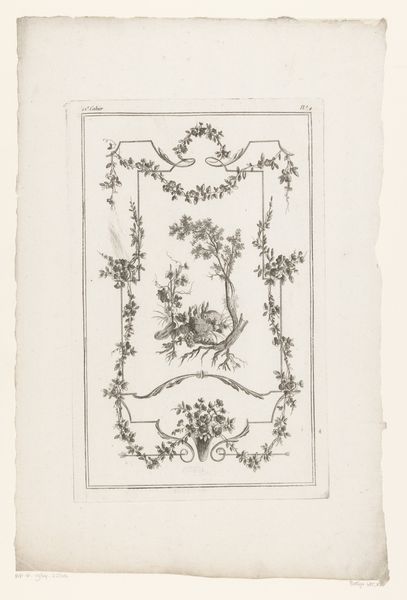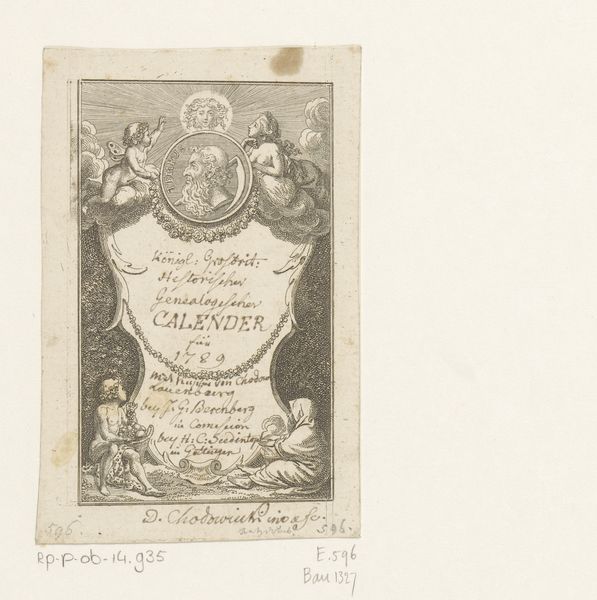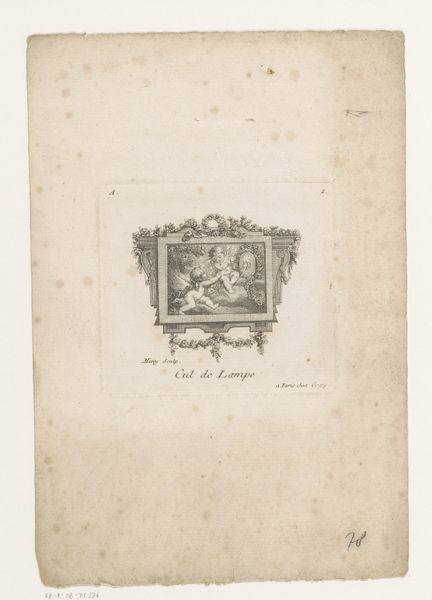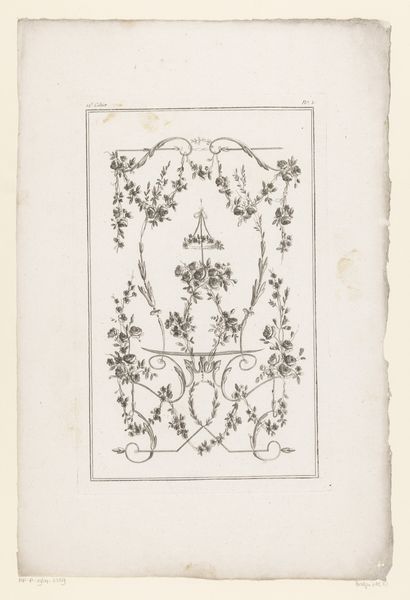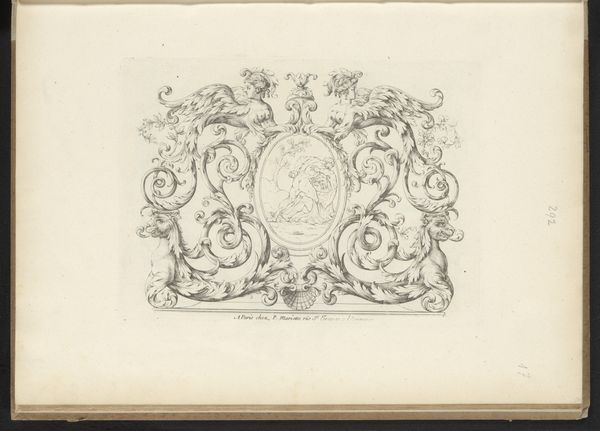
Dimensions: height 157 mm, width 94 mm
Copyright: Rijks Museum: Open Domain
Editor: This is "Herdenkingskaart voor Světlá" a memorial card by Hugo Steiner-Prag, made in 1923, using ink engraving and print. The detail is amazing. I am interested to know: How do you interpret this work from a materialist perspective? Curator: I notice the incredibly precise engraving, likely employing industrial processes becoming more commonplace. The card itself—its paper, its size—speaks to mass production techniques, but it is deployed for the very intimate purpose of memorialization. How does that tension between the mass-produced and the deeply personal impact you? Editor: I guess that makes me think about who would have owned it. Was this available to everyone, or for purchase by a certain social class? It almost feels like accessible mourning. Curator: Precisely. And look closely at the scene depicted: an idealized landscape with architecture in the background. What materials do you see represented? Editor: Stone, brick, vegetation. It suggests an abundance, or at least an idealized vision of nature and the built environment. Curator: Exactly! And this image, rendered through labor-intensive engraving techniques but reproduced on inexpensive material, democratizes that ideal. Consider how this contrasts with individually commissioned, handcrafted memorials available only to the wealthy. Editor: So, it’s about accessing those feelings of grief and remembrance within a changing world, as new production methods influence culture. Curator: Yes! It transforms mourning into a tangible object widely circulated and consumed. Editor: I had not considered the way the means of production is such an integral element to the social function. Thanks, that really expanded how I view the piece!
Comments
No comments
Be the first to comment and join the conversation on the ultimate creative platform.
